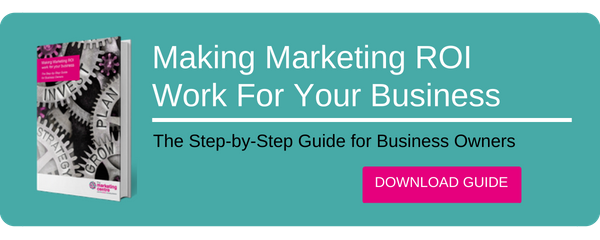It’s difficult to overstate the importance of a great website. It’s the digital representation of your brand, and the customer’s experience with it reflects on your business as a whole.
Your site needs to be quick, it needs to be easy to navigate, the copy needs to be great, it needs to look fantastic, it needs to be optimised for SEO and mobile and more besides. For these reasons and more, getting it right is a bigger job than you might initially think.
We’ve worked on thousands of web builds, so we’re well placed to offer clear guidance on where to start, highlight some common pitfalls, and to ensure you’re well armed to get it right first time.
Here are 6 ways you can manage your new website build effectively:
1. Clearly define the website objective
2. Determine your brand messaging
3. Map out key website pages
4. Create a content plan
5. Set a project plan
6. Plan for ongoing support and development
1. Clearly define the website objective
Before you get carried away with its look and feel, you should set some business objectives for the site. Are you looking for more traffic, clearer lead progression, a higher conversion rate, more consistent branding? What is the site trying to achieve, and what measurements will you use to know you’ve achieved it? Once you (and your web agency) are clear on the goals, the rest of the build flows from there.There are also a couple of other crucial ‘must haves’ for any modern web build. First, it has to be designed mobile first. In May 2018, Google announced mobile-first indexing. In layman’s terms, this means that the search engine bases its entire search algorithms on how your website performs on a smartphone. If you want more people to find you on Google, it has to be built around mobile.

This is different to building a responsive site (which is built for desktop but adjusts the content for mobile.) It means exactly what it sounds - a website built to work perfectly on mobile devices as a priority.The second must-have is speed: The time it takes a website to load can have a huge impact on whether someone sticks around. Ideally you want a site that loads in under three seconds on a mobile and under two seconds on a desktop. You can test your existing site performance here. Not only will it show the actual load time of your site on mobile, it also estimates the percentage of visitors you’re losing due to slow speeds. If your website takes seven seconds to load, for instance, Google estimates 26% of visitors are being lost. That’s a lot of potential customers.
A lot of technical know-how goes into improving site speed, but the right agency will handle that on your behalf. Your job is to stipulate up front your expectations and goals for the site before anything else.
2. Determine your brand messaging
This article is about web builds, not brand guidelines, but some quick points. You need to have a clear sense of your value proposition - how your website and your product or service are going to benefit your customers in their own lives. You need to determine your key messages that clarify your positioning, you need to determine your brand’s tone of voice and you need visual guidelines for what your brand is supposed to look and sound like.And here’s one more web-specific tip. Think about SEO first. Do a keyword search to find out what your customers look for before signing off the build: remember, you are building the site for your customers, not yourself. It’s no use building for the keywords you think are important.
At some point, you’ll be working on the copy for your website, which won’t be as easy as you might think, this information will be crucial to them to ensure the site sounds like you, gets your business benefits across succinctly and shows up in search engines when people are looking for solutions to the issues that your business can solve.
3. Map out key website pages
It’s tempting to cram as much information as possible onto your site to communicate everything your business does; that’s why you see a lot of sites with hundreds of product pages, multiple menu options and a confusing layout. Of course, the number of pages will vary wildly between an e-commerce site and a high-end manufacturing one, but as with most things, simple is best.

Again, an agency should help to focus your thinking, but still it’s easy to get carried away when briefing a website build. Every time you want to add a page to the site, ask yourself three questions:
-
Why does this page need to exist? It needs to feed directly into the business objectives you set for the build, providing a concrete step toward achieving that objective.
-
What action do we want the visitor to take? A web page that doesn’t end in a call to action will stop your customer journey dead; customers will bounce off and read something else, somewhere else online.
-
What messages support that? What will your pages say to customers? How will you guide them toward the actions, and what will you offer the customer in return?
The site architecture should be 100% focused on what the visitor wants, not what you want to include. If you don’t have a solid answer to all three of the questions above, consider scrapping the page altogether.
4. Create a content plan
Create content before the build if you can, during it if you have to, but never after. The website is only as good as what’s on it: an empty site doesn’t serve its business objectives, and rushed content often undermines them. If the content is the last thing you work on, you’ll end up with a finished website and a lot of work still to do before it can go live.
5. Set a project plan
Have the agency deliver little and often. Your team should be in touch with the agency several times a week; the agency should supply a detailed weekly update; and you need to review their progress against a predefined timeline. Leaving them to design and manage the project on their own removes the work from your control and your terms.
6. Plan for ongoing support and development
A website is a living thing. You’ll always be adding more content, more products, more services and more function, as well as making tweaks and running A/B split tests to optimise its performance, which means it will need development over time. Make sure you know how this will happen and who will do it. You’ll also need maintenance. Glitches are inevitable - how will those be addressed, who will do it, and what response time can they guarantee?
It’s also important to recognize that your website is not a standalone platform, it is connected to the whole of your marketing ecosystem and how it is connected to your other channels, such as social media, needs to be taken into consideration when building your website.
Look at the infrastructure, too. Make sure you own and manage your own domain name (the address people type into their browser to find your site) and hosting environment (where the website data is actually saved). If that business ends up folding for some reason, that could have a detrimental effect on your own, so don’t leave it to chance. Set up a website that’s independent of a hosting firm’s potential failures.
So much of the success of a web build comes to finding the right partner to help you build it. And believe us, there are some great ones out there, but some that really aren’t up to scratch.
Don’t commission a website until you have your marketing strategy worked out - and start working out your marketing strategy with our Marketing Fundamentals ebook.
Image credit: (CC) Jenny Downing (Flickr)




